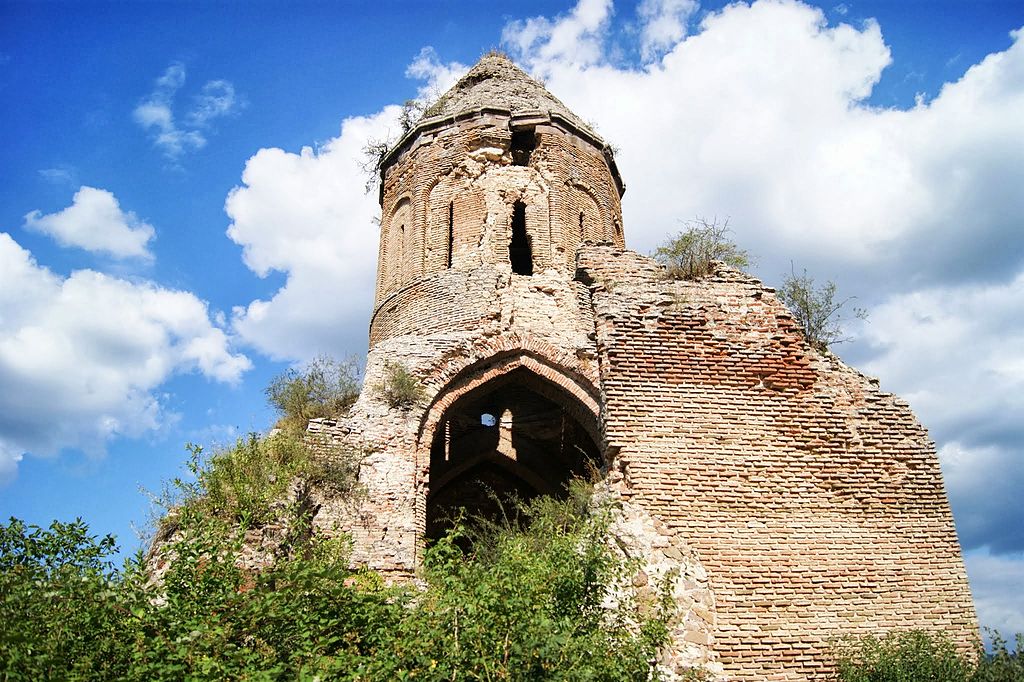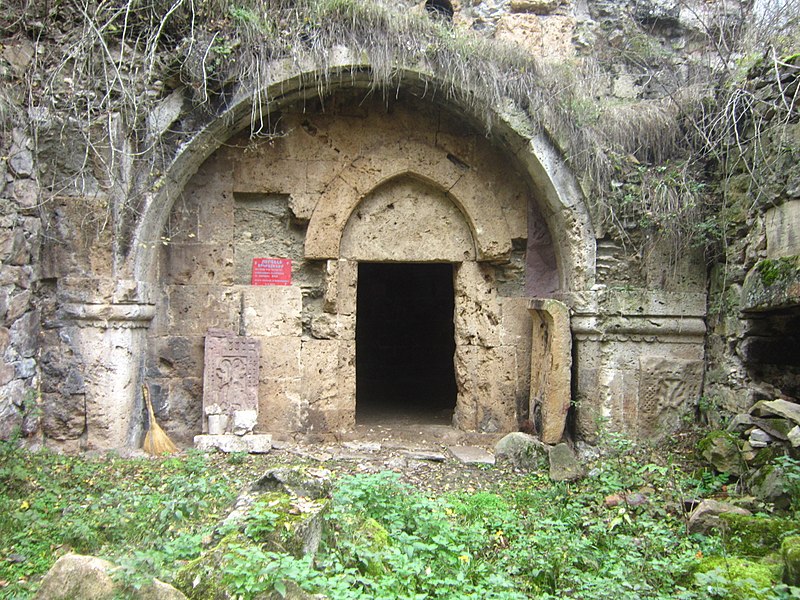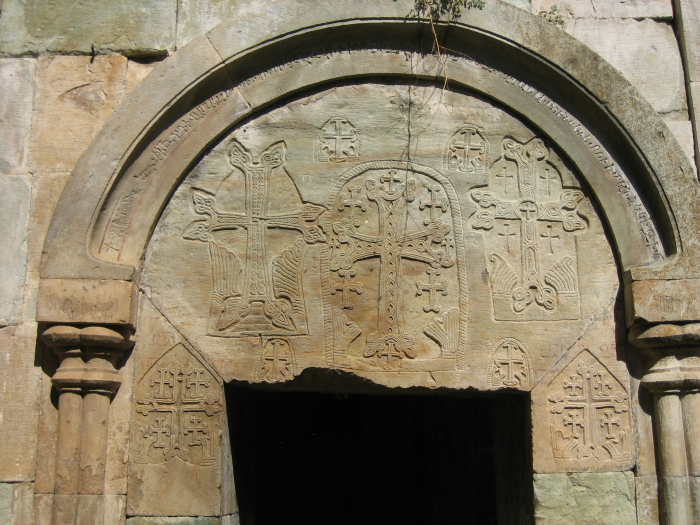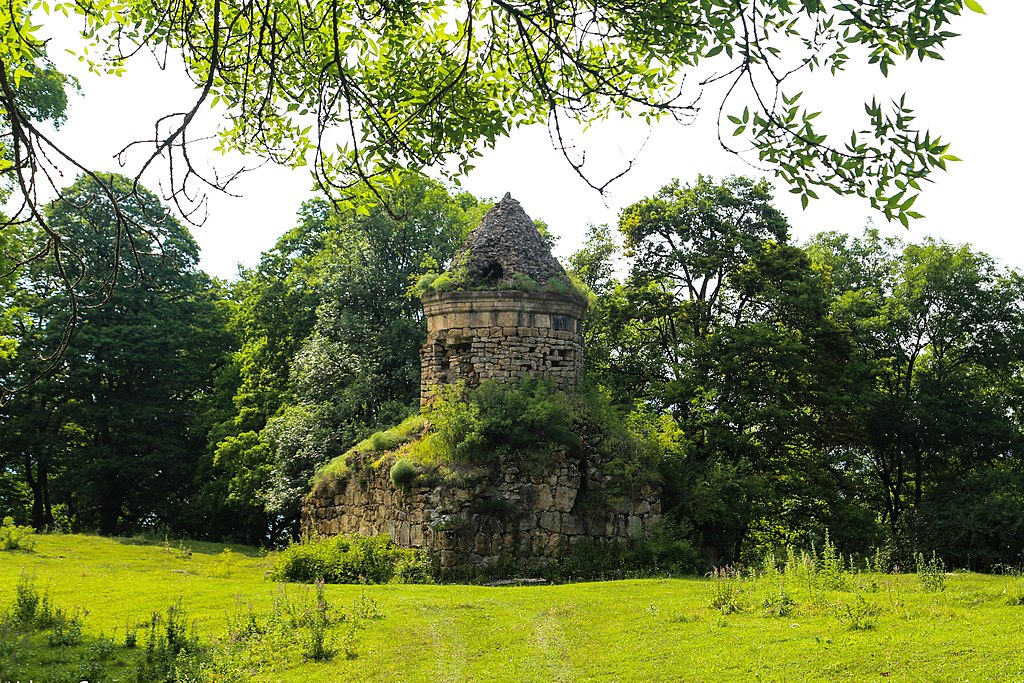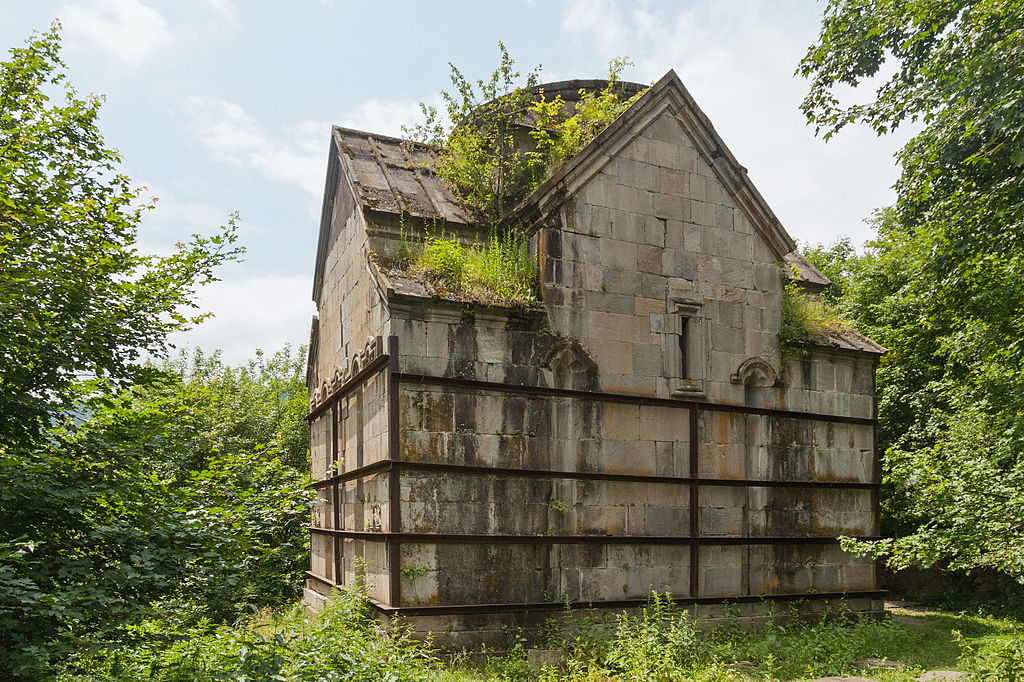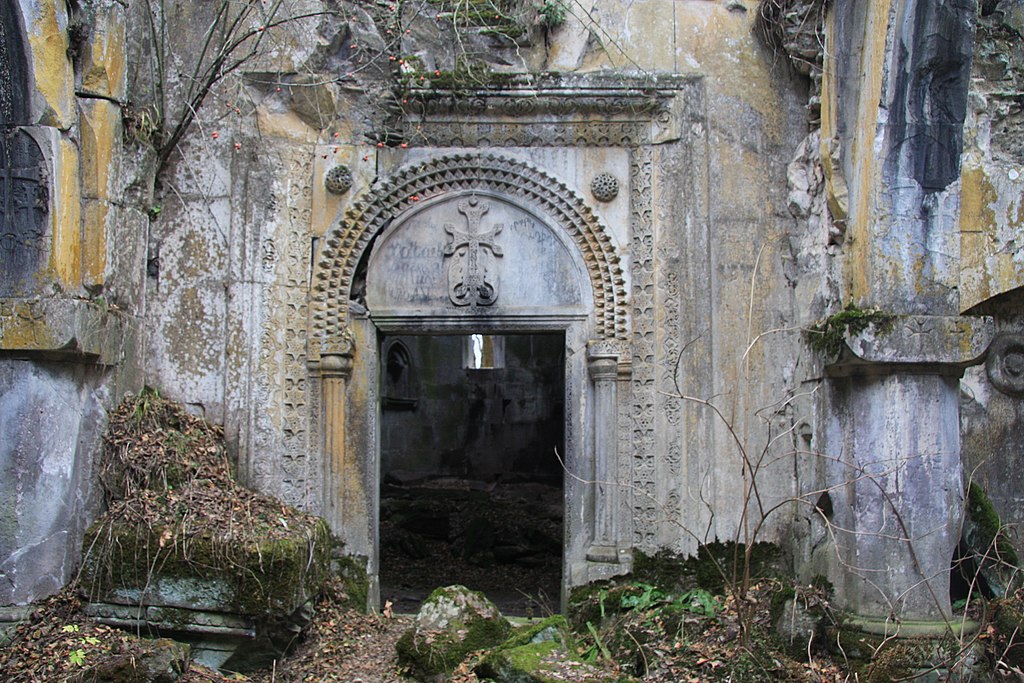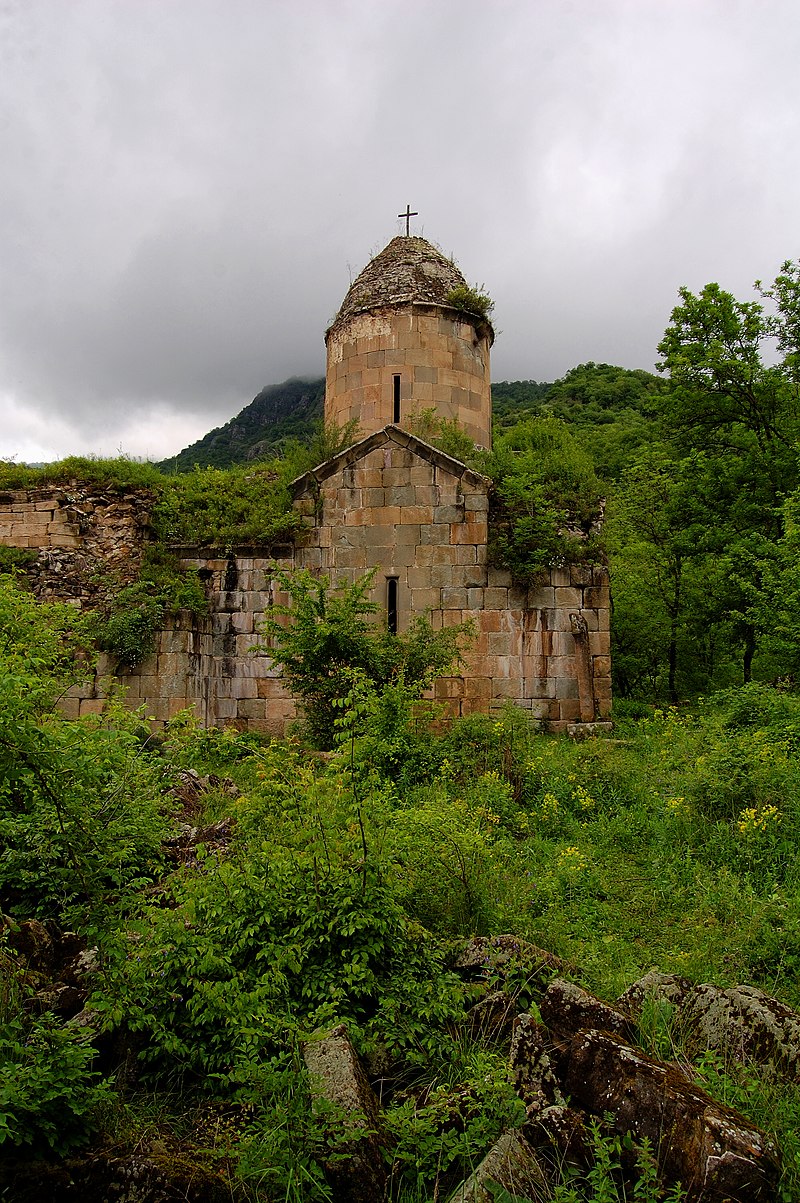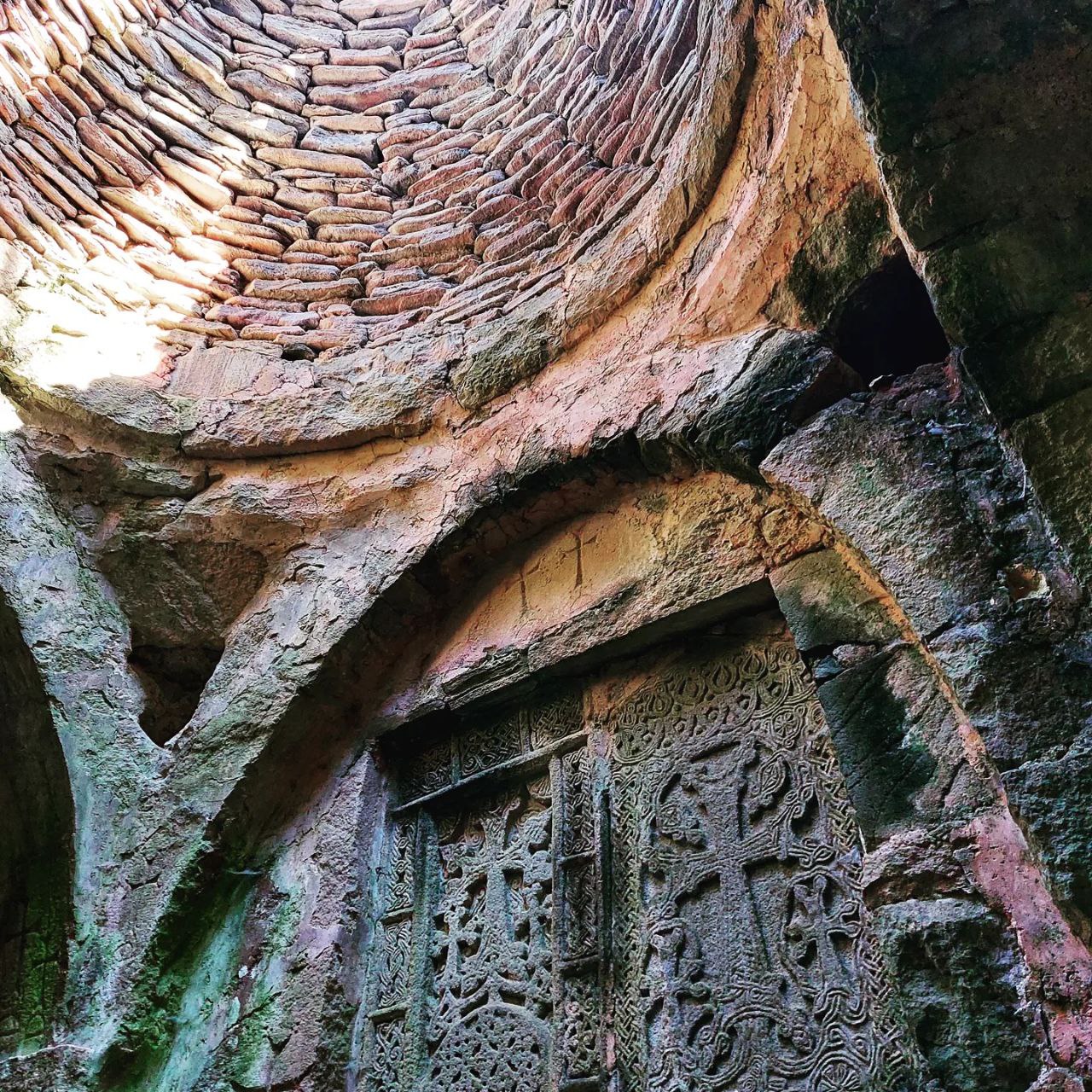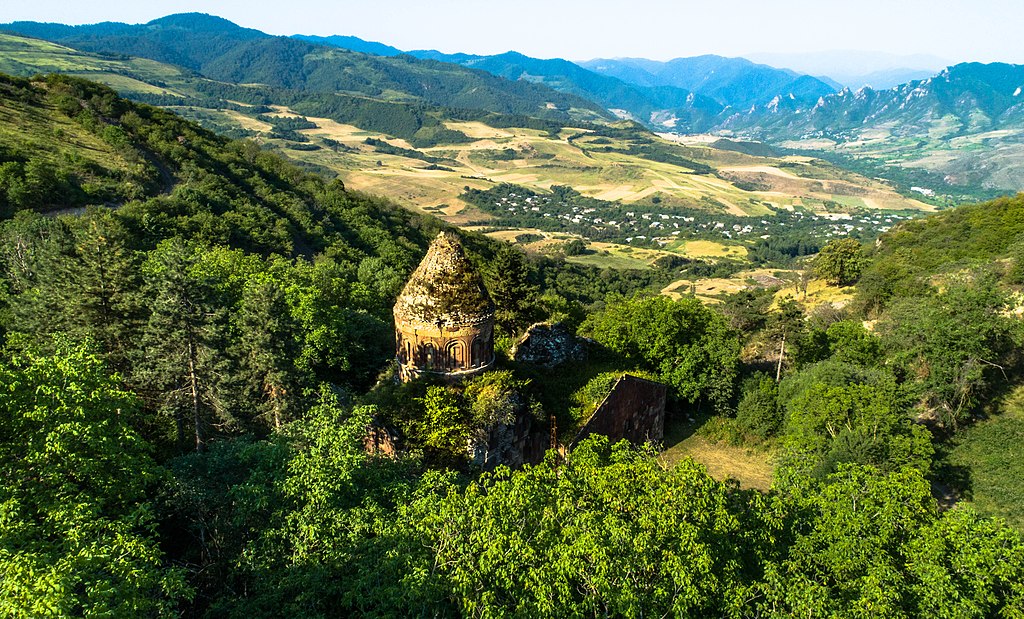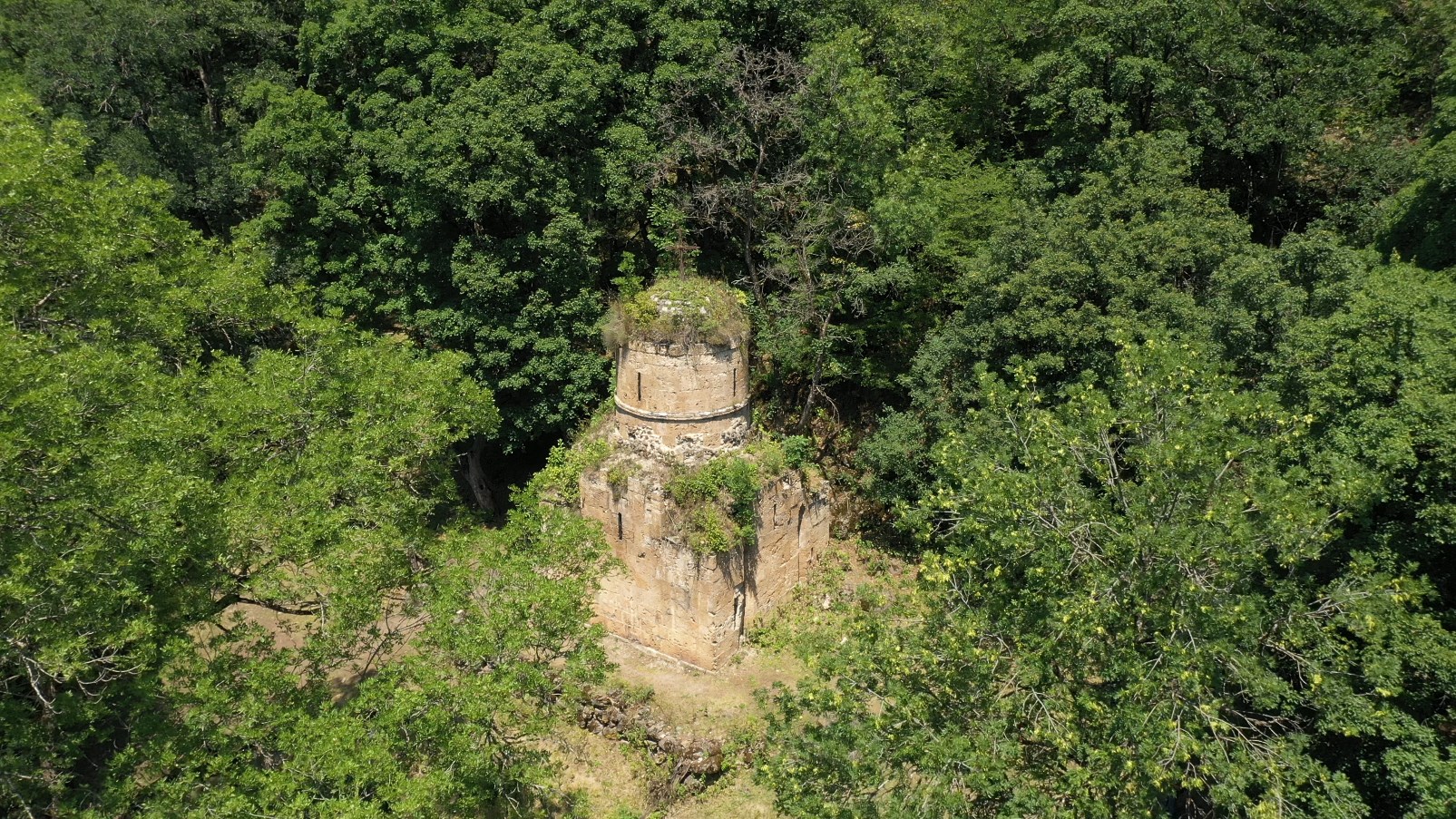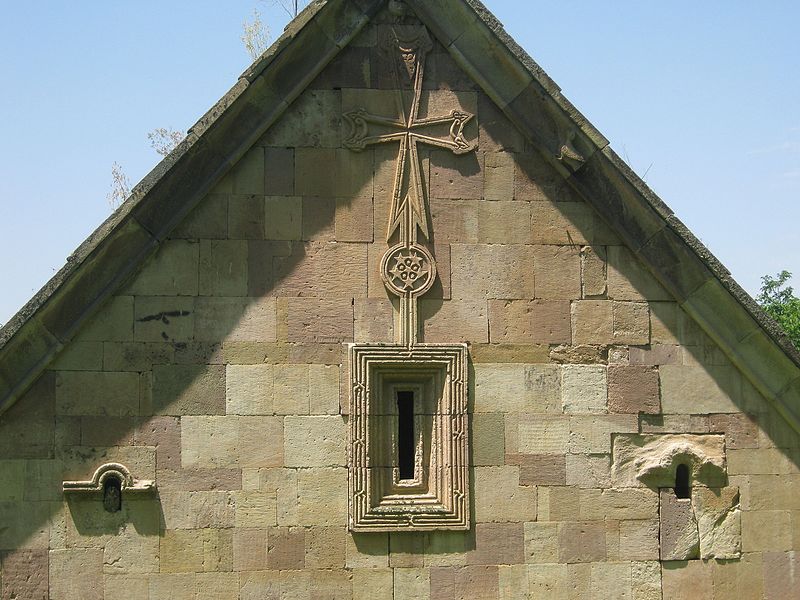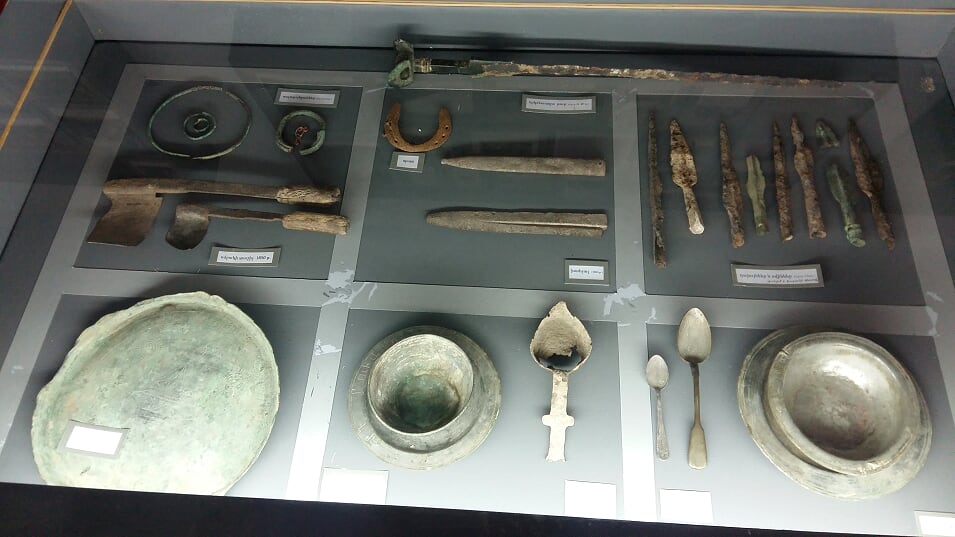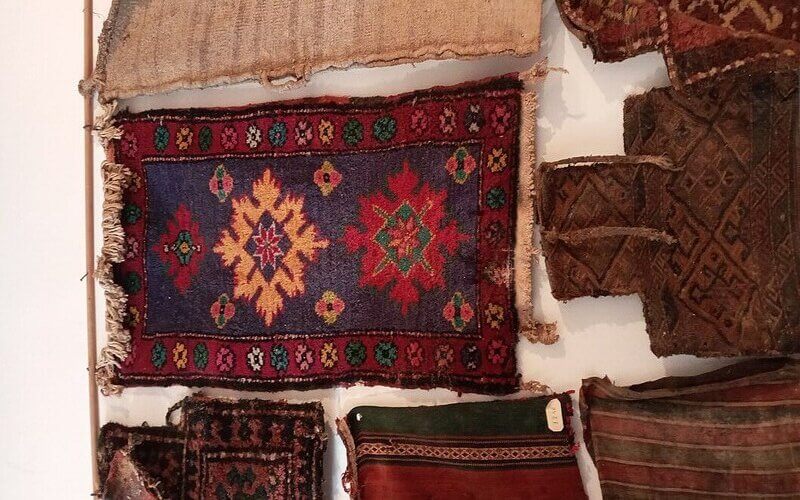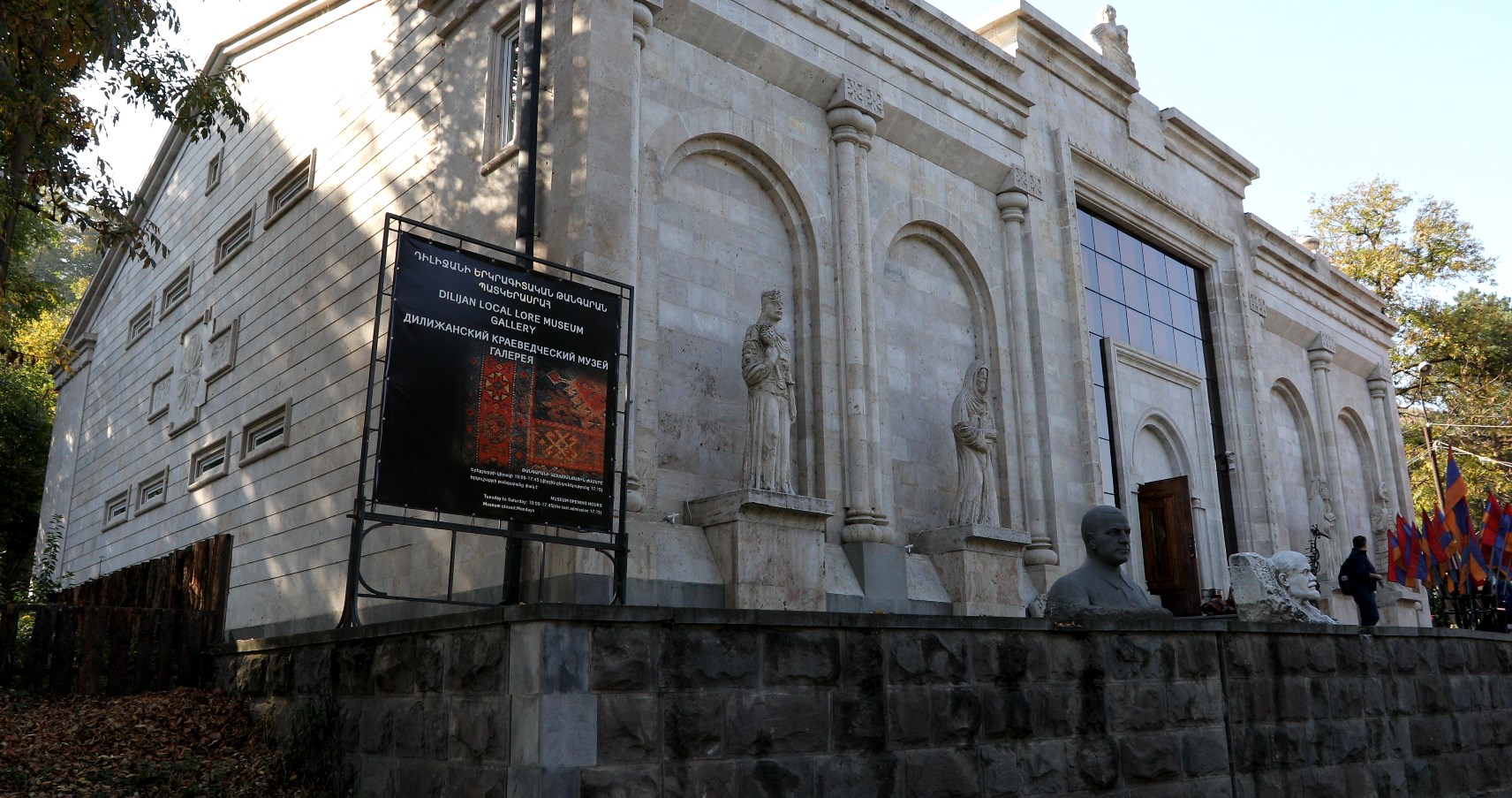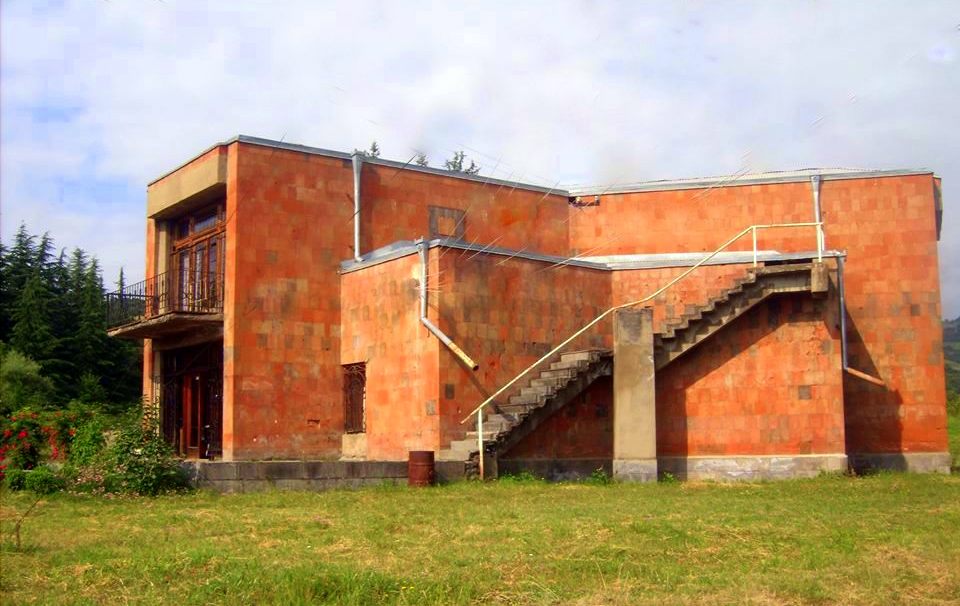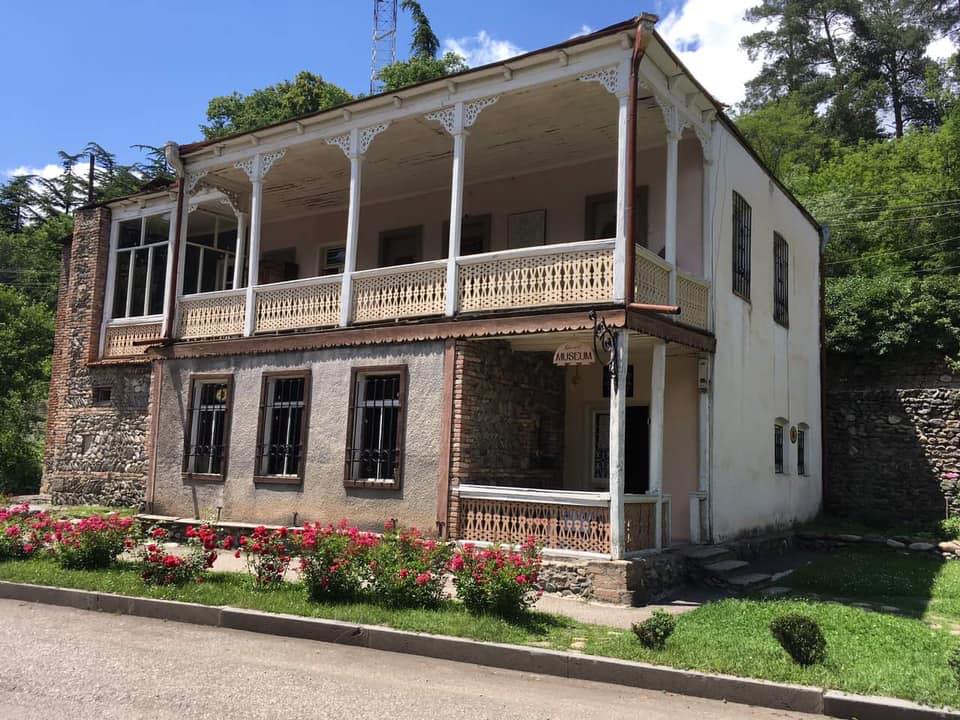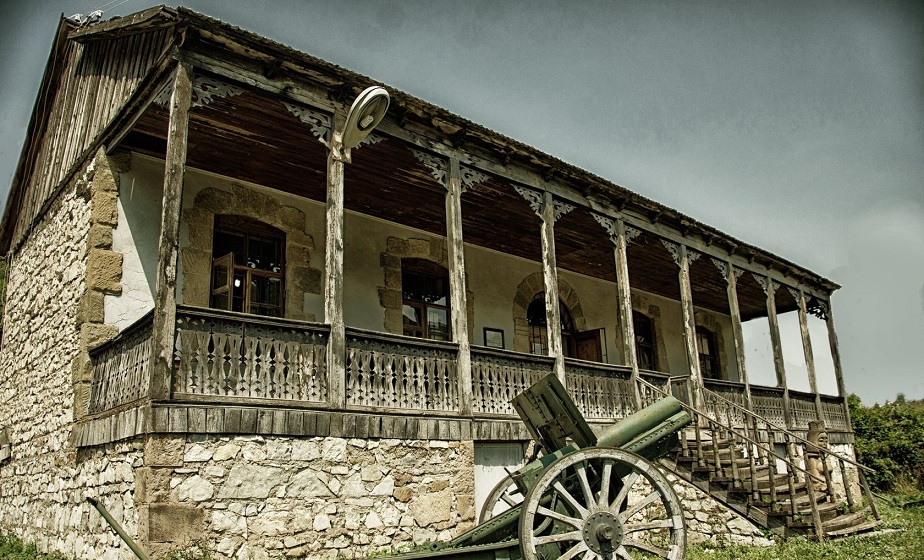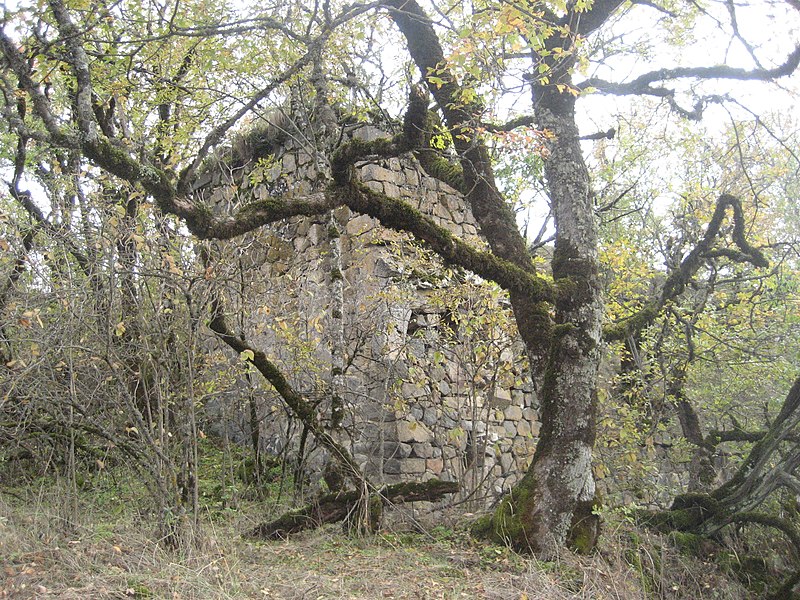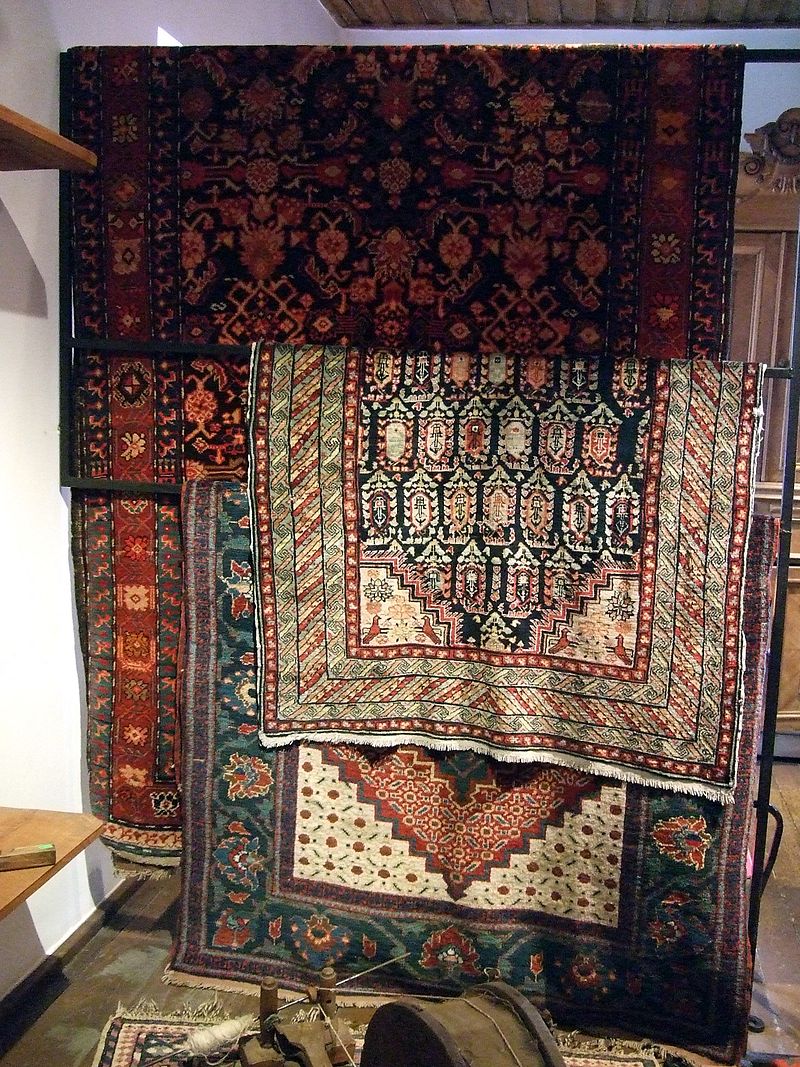It is located 2 km east of Gandzakar village, on the top of the mountain of the same name. The whole valley of Aghst, the Lesser Caucasus Mountains, as well as the Yenokavan Fortress can be seen from here. The walls are three rows, up to 3 m wide, lined with large, unworked stones, without mortar. It looks like a sack that encloses with a drawstring. Some parts of the walls are still standing. Pets were hidden on the southern slopes of the castle, where it was impossible to live, and in the northern part, the walls of the apartments can be seen. On the south side, two entrances 2-3 m wide have been preserved. During the excavations in the castle, 12 red clay, blue jars and other archeological items were found, which can be dated to IV — III BC centuries.
It is located 2 km east of Gandzakar village, on the top of the mountain of the same name. The whole valley of Aghst, the Lesser Caucasus Mountains, as well as the Yenokavan Fortress can be seen from here. The walls are three rows, up to 3 m wide, lined with large, unworked stones, without mortar. It looks like a sack that encloses with a drawstring. Some parts of the walls are still standing. Pets were hidden on the southern slopes of the castle, where it was impossible to live, and in the northern part, the walls of the apartments can be seen. On the south side, two entrances 2-3 m wide have been preserved. During the excavations in the castle, 12 red clay, blue jars and other archeological items were found, which can be dated to IV — III BC centuries.


